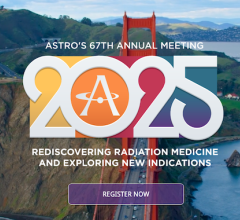
October 31, 2018 — An analysis led by researchers at Philadelphia’s Fox Chase Cancer Center found treating localized prostate cancer with hypofractionated intensity modulated radiation therapy (HIMRT) yields equivalent disease outcomes compared with conventional intensity modulated radiation (CIMRT). It is the largest randomized single-institution study with the longest follow-up period on this topic to date.
The study enrolled 300 men and followed them over a median period of 11 years after treatment. Half had received H-IMRT and half had received C-IMRT. Men in both groups also received standard-of-care androgen deprivation therapy (ADT) when it was indicated. H-IMRT delivers more radiation per treatment session, allowing patients to complete treatment over a much shorter period than C-IMRT (5 ½ weeks versus 8 weeks). Advantages include fewer medical appointments, lower costs and more efficient utilization of clinical resources.
Vladimir Avkshtol, M.D., a radiation oncology resident at Fox Chase, presented the results at an oral session at the 60th Annual Meeting of the American Society for Radiation Oncology (ASTRO), Oct. 21-24 in San Antonio, Texas.
At five years and 10 years after treatment, men who had received either form of therapy showed similar results on several measures, including prostate-specific antigen (PSA) control and overall survival. There was initially some cause for concern over a trend toward higher rate of developing metastases in men in the H-IMRT group; however, this was not statistically significant and no subset of patients seemed to be at higher risk on further analysis.
“Our analysis shows that for most men with localized prostate cancer, H-IMRT is a viable option and should be considered for most men. Our study is one of the biggest and most mature studies of its kind in the U.S.,” said Avkshtol.
Read more about late-breaking clinical trials presented at ASTRO 2018.
For more information: www.astro.org


 December 11, 2025
December 11, 2025 









